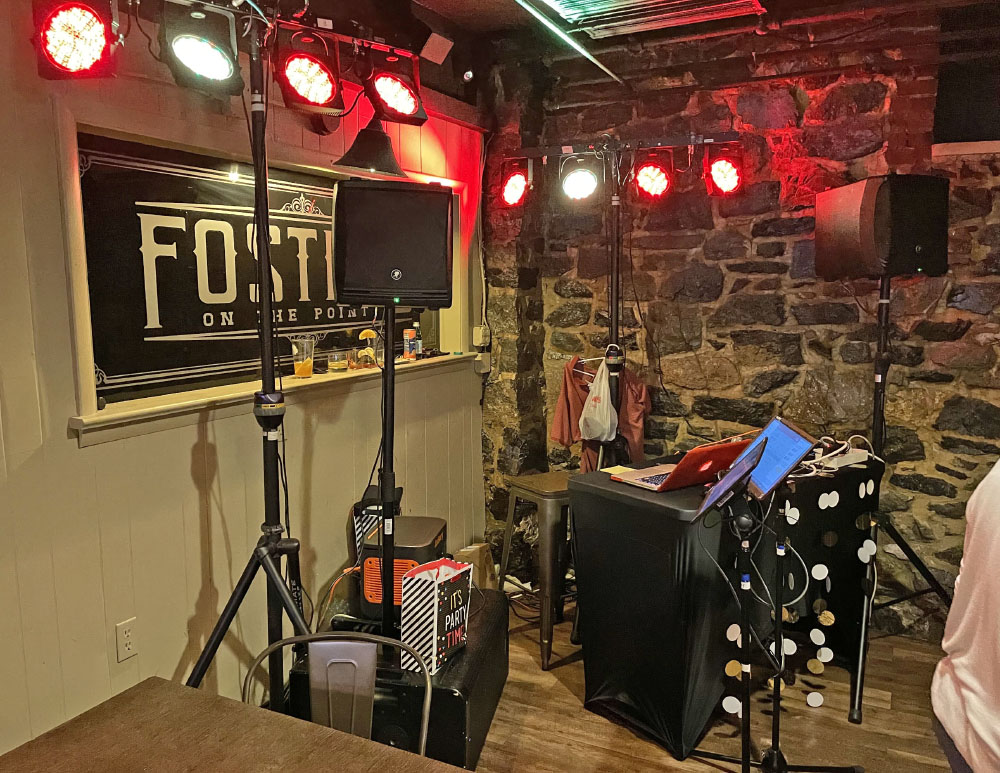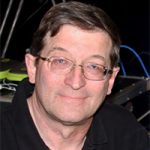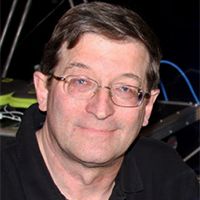As I’ve detailed in the first five articles of this series, there have been huge advances in battery storage over the past few years.
Lithium technology has provided a super lightweight battery with a pure sine wave 120-volt AC inverter that you can pick up with one hand, but which can power stage amps and a reasonably sized sound system for hours. That means you can now do gigs and party events at the beach, in the woods, or at a parking lot far away from an AC electrical outlet, all without having to drag along a generator with exhaust fumes and noise.
Now that I’m gaining confidence in how long a Lithium portable power station can run a smaller sound system, I’ve also begun some real-world tests including powering a basic LED lightning system. But I would never ask anyone else to try something I wouldn’t do for myself. So, when the head of my high school reunion committee asked if I could DJ my own 50th class reunion, it seemed like a great opportunity to experiment with me as the test subject.
While I dislike the term “solar power generators” because solar panels are optional and the term “generator” makes people think of gasoline powered noise making generators, that’s what much of the industry calls them. I like to think of them as portable power stations with optional solar panels for recharging. Of course, you can plug them into an electrical outlet or even a cigarette lighter in your vehicle for charging, so there’s really four ways to recharge them, albeit some slower than others.
The Approach
For the reunion, I just needed a basic DJ system with enough horsepower to make a room bump with around 100 guests. Plus, I wanted to bring along a few LED lights for mood/excitement as well as a few video screens for a “Lip Sync Battle” to keep the party rolling.
Jackery has loaned me its newest 2000 Explorer Pro power station to review for my RV writing gig, and while I was pretty sure it was overkill for this application (it has a 2,000-watt continuous/4,000-watt peak, 120-volt pure-sine inverter with a 2,000-watt-hour Lithium battery), I could certainly use the data to estimate how well a smaller power station would have worked.
The 2000 Explorer Pro not only has a built-in 1,500-watt charger, but it can also be teamed up solar panels stated to be capable of as much as providing 1,200 watts. For this test I was inside of a large bar and no sunlight was possible. So, I just charged it up to 100 percent before the gig started and watched how much power was still available after four hours of music and lights.
I brought along a pretty beefy portable sound system similar to what a small band could use for a few hundred people. For the tops I used a pair of Mackie DLM12 loudspeakers with onboard amplifiers rated to provide up to 2,000 watts. These bi-amped dual-concentric loudspeakers have built-in DSP with two-way crossover along with delay, equalization and feedback control.
Because I wanted some serious bass output, I also brought a Line-6 StageSource L3s dual 12-inch subwoofer with a built-in 1,200-watt amplifier and crossover. This is the loudest, deepest, reasonably small subwoofer in my inventory, and it’s always done a great job for my smaller acts and DJ work.
In addition, I have a pair of Chauvet 4Bar lights with a foot controller for various color and sound chase modes. Nothing too fancy, but typical of an entry-level DJ setup or even a small band. No, this isn’t a full lighting rig for a large act, but it’s great for a small stage in a room for maybe 100 to 200 patrons. Hey,
I’ve done bigger rooms with less lighting, and this does get the job done for a wedding or reunion party. However, no karaoke was allowed! (Hey, I had to draw the line somewhere.)
So, rather than being forced to listen to drunken crooners, I opted to create the lip-sync competition. I simply added a pair of small video monitors on microphones stands and cued up a bunch of YouTube videos so the participants could read the lyrics. Then I gained up the sound system loud enough to cover anything they were actually singing into the mics that were acting as props. It turned out to be a lot of fun (really, really fun), and I got to play VJ for an hour.

How Did It Work?
This was a four-hour gig starting at 5 pm, so as noted, I fully charged up the Jackery 2000 Explorer Pro, turned on the lights to red mood lighting and began playing some music tracks at moderate 80 dB SPL for the meet and greet. And, of course, I had to do the obligatory announcements at full volume every 10 minutes or so.
But once everyone was sufficiently lubricated with the free alcohol and the dinner was finished, I cranked up the volume for the last two hours. I’m estimating a mid 90 dB SPL mix in the room, with a lot of subwoofer bump. This must have worked because we did a bunch of lip-sync battles using my fake $10 prop mics, and then I took requests for dancing in the last hour and just keep the room bumping and lights flashing.
Interestingly, after two hours of 80 dB SPL levels with the lights in static color mode and two more hours of 95 dB SPL volume with plenty of sub, there was still 80 percent of the original 2,000-watt-hours of battery storage. That suggests another 16 hours of run time from a single charge would be possible. Yikes! I would have run out of energy long before the battery ran out of power.

If I’d have brought a 1,000-watt-hour power station instead, it should have been able to easily run the sound and lighting systems for four hours non-stop and still have 50 to 60 percent of battery charge left. So, it could have done an eight-hour gig at this same ratio of soft/loud music and lighting production.
What about using this for a band? I didn’t bring my Nord Stage 3 keyboard or my guitarist friend Karl with his HeadRush pedal and other tech goodies. But I’m pretty confident that a small band with a 1,000-watt-hour battery pack would be able to play a 3-hour set, plus an hour of setup, plus an hour of house music. However, to be sure, you’ll want to measure your own production system’s watt-hour power that I’ve covered in previous articles in this series.
But for now, I think that a 500-watt-hour power station would work great for most solo artists and a 1,000-watt-hour power station would work nicely for small bands or a DJ with basic LED stage lighting. I also have a Jackery 1500 Explorer to try and Karl has a Jackery 500 he uses for solo gig, so I’ll get additional info soon.
What about adding solar panels? Do you plan on being marooned on a desert island with all your gear? Then by adding 100 or 200 watts of solar panels, you’ll nearly double the possible running time per day as long as you can get the solar panels in the sunshine.
Getting The Word Out
I’ve also been getting some interesting feedback from a Facebook keyboard group I’m on. One of the other members on this “Keyboard Players in Cover Bands” group just posted the message in Figure 1 as part of a thread where I’m discussing how to use Lithium power stations for remote gigs. He bought a Jackery Explorer 1000 last month and tested it on his own keyboard rig, which it powered for 90 minutes and still had 88 percent of the charge left.

I’m planning on trying this with a full band with lighting in the next month, and I’ll report back on how it goes. But this type of portable power station offers a ton of possibilities for gigging far away from AC power.
So, go ahead and book those beach or woods weddings, take your praise team out to a parking lot service far from power or even do a pool party without worrying about being shocked around the wet concrete. Since this is a totally isolated power system, the chance of electrocution while playing on the wet ground is nearly impossible.
Stay tuned for more battery-powered fun in the sun (or even in a bar)…















